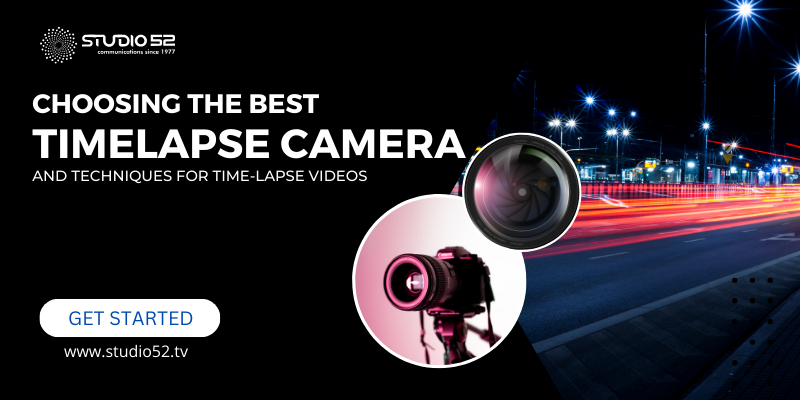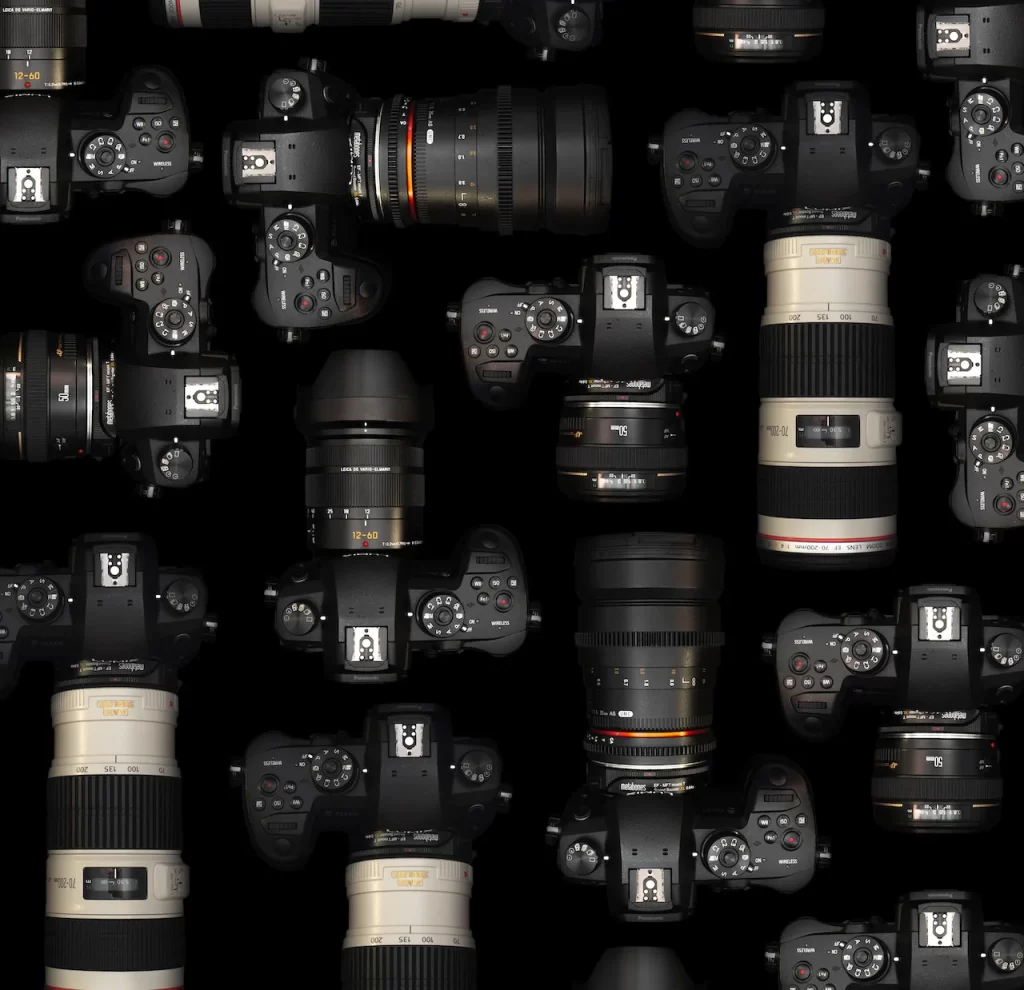Selecting the Optimal Camera and Methods for Crafting Time-Lapse Videos

The world of timelapse videography invites you to embark on a journey where every second counts in capturing the beauty of motion in a still frame. In this comprehensive guide, we will delve deep into the art of choosing the best camera and techniques for creating mesmerizing timelapse videos. Whether you’re a novice looking to get started or a seasoned pro seeking to up your game, this article is your go-to resource. Let’s unlock the secrets of creating stunning time-lapse masterpieces.
Choosing the Best Camera and Techniques for TimeLapse Videos
Timelapse photography is a captivating art that requires the right tools and techniques to achieve spectacular results. To get started on your time-lapse adventure, you need to select the best camera and master the essential techniques. Here’s how to do it:
Selecting the Ideal Camera
The foundation of a remarkable time-lapse video lies in choosing the right camera. Consider the following factors when making your decision:
- Camera Type: Opt for a DSLR or mirrorless camera for maximum control over settings and image quality. These cameras offer interchangeable lenses, which are essential for creative time-lapse work.
- Resolution: Higher resolution cameras produce sharper images, so aim for at least 24 megapixels. This ensures your time-lapses retain exceptional detail and clarity.
- Sensor Size: Larger sensors perform better in low light conditions and capture more detail. Full-frame sensors are preferred, but APS-C sensors can also deliver impressive results.
- Intervalometer: Ensure your camera has this feature built-in or invest in an external one for precise time-lapse intervals. An intervalometer automates the process, capturing images at predefined intervals.
Lens Selection
The choice of lens plays a pivotal role in your time-lapse project. Here’s what to keep in mind:
- Focal Length: Wide-angle lenses capture more of the scene, while telephoto lenses focus on specific details. Select your lens based on the story you want to tell in your time-lapse.
- Aperture: A wide aperture (low f-stop) lets in more light and creates a shallow depth of field, adding cinematic flair to your time-lapses. Experiment with different apertures to achieve the desired effect.
- Lens Stability: Use a stable tripod to eliminate camera shake. Additionally, consider lenses with built-in stabilization features for even smoother shots.
Setting Up Your Camera
Proper camera setup is crucial for successful timelapse videos. Follow these steps:
- Manual Mode: Set your camera to manual mode to have full control over exposure, focus, and white balance. Automatic settings can lead to inconsistencies in your time-lapse.
- RAW Format: Shoot in RAW format for maximum editing flexibility. RAW files contain more data, allowing you to make precise adjustments during post-processing.
- Long Exposure Noise Reduction: Enable this feature to reduce noise in long exposures. It’s especially useful when capturing time-lapses during nighttime or in low-light conditions.
- Focus and Framing: Ensure sharp focus and compose your shot before starting the time-lapse. Use manual focus to prevent the camera from refocusing between shots.

Time-Lapse Techniques
Achieving stunning time-lapse videos involves mastering various techniques:
- Interval and Duration: Determine the interval between shots and the total duration of the time-lapse. Shorter intervals result in smoother motion, while longer intervals create a more dramatic effect.
- Frame Rate: Choose an appropriate frame rate; 24-30 frames per second (fps) are standard for video. Higher frame rates can be used for slow-motion time-lapses.
- Motion Control: Add motion to your time-lapse with sliders, pan-and-tilt heads, or motorized systems. Motion control can bring an extra layer of dynamism to your videos.
- Golden Hour: Shoot during the golden hours of sunrise and sunset for captivating lighting. The soft, warm light during these times adds a magical touch to your time-lapses.
- Post-Processing: Use editing software like Adobe Premiere Pro, Final Cut Pro, or LRTimelapse to enhance your time-lapse by adjusting colors, contrast, and sharpness. Editing is where you can truly bring your vision to life.
Capture Every Moment with Precision! 
Tips for Capturing Breathtaking TimeLapse Videos
Now that we’ve covered the essentials let’s delve into additional tips and tricks that will elevate your time-lapse game:
- Plan Your Shots: Before heading out, plan your shots meticulously. Identify the key elements you want to capture in your time-lapse, including the subject, foreground, and background. This planning will help you tell a compelling story through your video.
- Use ND Filters: Neutral density (ND) filters reduce the amount of light entering your camera, allowing for longer exposures. These filters are especially useful for smoothing out motion in clouds or water, creating a dreamy effect.
- Monitor Your Battery: Time-lapse photography can be battery-intensive. Carry spare batteries or invest in a battery grip to ensure you don’t run out of power during a critical capture.
- Scout Locations: Visit your intended shooting locations beforehand to assess the best vantage points, lighting conditions, and potential obstacles. This preparation will save you time and ensure you capture the best possible footage.
- Experiment with Composition: Don’t be afraid to experiment with composition. Try different angles, perspectives, and framing techniques to add visual interest to your time-lapses. A unique composition can set your video apart.
- Stabilize Your Tripod: Ensure your tripod is stable and secure. Any movement during a time-lapse can result in shaky footage. Consider adding weight to your tripod for added stability.
Conclusion
Creating breathtaking time-lapse videos is an art that combines the right camera selection with expert techniques. By choosing the best camera, lenses, and settings, and mastering the intricacies of time-lapse photography, you can capture the passage of time in a truly captivating way. Remember to practice, experiment, and let your creativity flow. Now, go out there and start crafting your own stunning time-lapse masterpieces.
FAQs
How do I choose the right interval for my time-lapse?The ideal interval depends on the subject and the desired speed of your final video. Generally, an interval of 3-5 seconds works well for most scenes. However, experiment to achieve the desired effect.
Do I need expensive equipment for time-lapse photography?While high-end gear can offer more control, you can start with a basic DSLR and tripod. Invest in additional equipment as you gain experience and want to explore more advanced techniques.
Can I shoot a time-lapse with a smartphone?Yes, many smartphones have time-lapse features, but for more control and quality, consider using a dedicated camera or timelapse production company is great for learning the basics and capturing spontaneous moments.
What software is best for editing time-lapse videos?Popular options include Adobe Premiere Pro, Final Cut Pro, and LRTimelapse for advanced control over your footage. Choose the software that aligns with your editing preferences and skills.
How do I avoid flicker in my time-lapse videos?Flicker can be caused by changes in exposure or lighting between shots. To minimize flicker, use manual settings, maintain consistent lighting conditions, and enable long exposure noise reduction on your camera.
Contact us today at +971-04-454-1054 or mail us at Sales@studio52.tv







No comments:
Thanks for the comment you can also visit our blog library here - https://studio52.tv/blog/